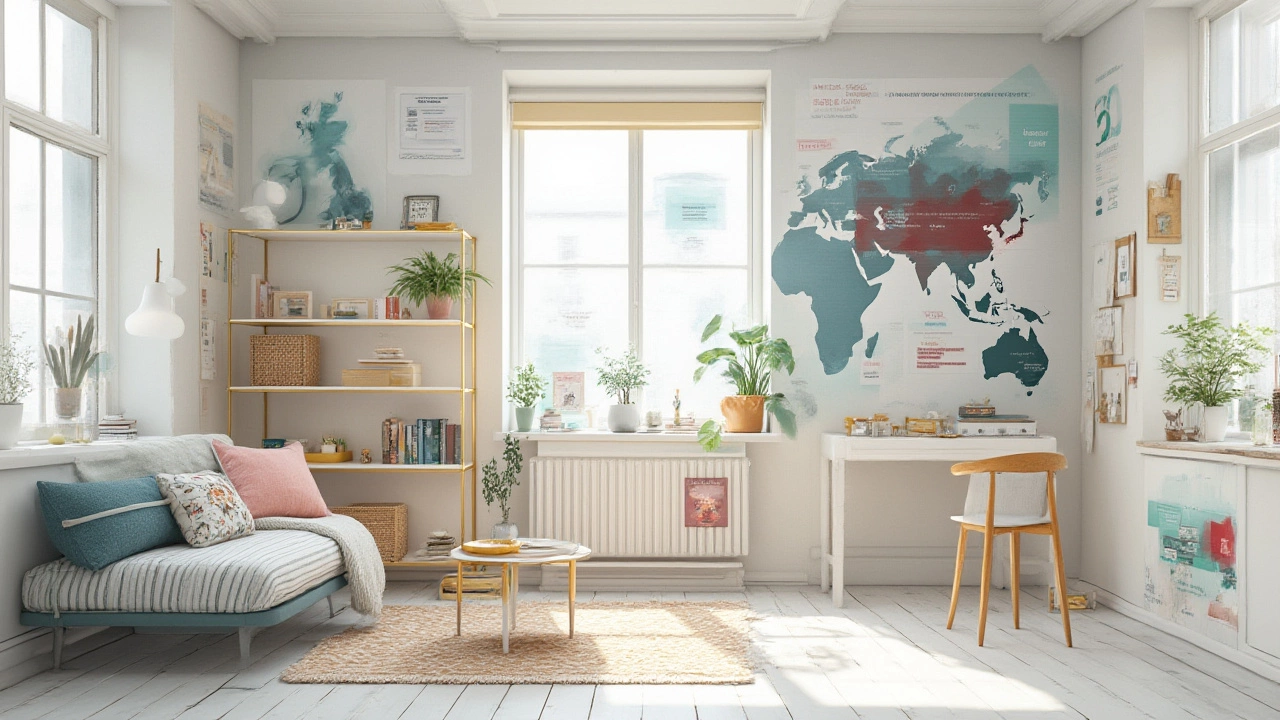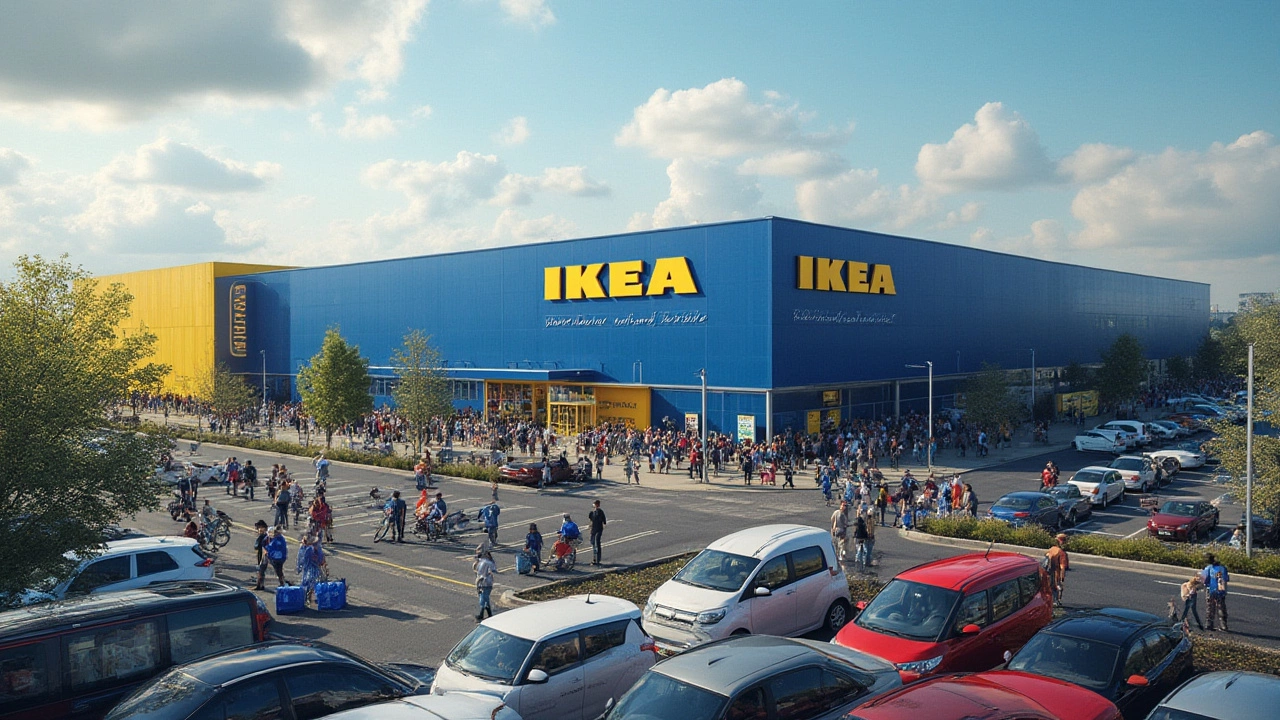You know those flatpack boxes and the sweet scent of cinnamon buns? IKEA is hard to miss. This Swedish retail giant is a force in global furniture, but have you ever wondered where people just can’t get enough of those blue-and-yellow warehouses? The answer isn’t as obvious as you might think. Pull up a chair—ideally an IKEA one—and let’s break down which corners of the world are the most IKEA-obsessed, how those regions love to shop, plus some wild sales data that might have you rethinking everything you thought you knew about Billy bookcases.
IKEA’s Global Footprint: Where the Blue Box Rules
It might sound wild, but Germany, not Sweden, grabs the top spot for IKEA sales. As of 2025, Germany has over 55 IKEA stores—more than any other country on Earth—clocking in sales worth nearly 6.8 billion euros last year, according to official IKEA Group annual reports. If you’ve ever stood in a long line at an IKEA checkout in Berlin or Munich, you know it’s no joke. Germans absolutely love DIY home upgrades, making them super fans of the Swedish brand’s style-meets-practicality approach. The numbers tell the story: per capita, Germans are some of the biggest buyers of flatpack furniture anywhere.
France follows, racking up more than 3 billion euros in annual sales, with the United States close on its heels. While the U.S. doesn’t have as many IKEA stores—only about 52 nationwide—the sheer population means those giant warehouses pull massive crowds. The stores near New York and Los Angeles aren’t just busy, they’re legendary for swarms of shoppers carting off KALLAX units as if their lives depended on extra cube storage. But wait, there’s more. China is racing up the charts, outpacing countries like the United Kingdom with its mix of megacities and a culture fast-warming to the self-assembly trend. IKEA’s largest store globally opened in Manila in 2021, but it’s cities like Shanghai and Beijing that are leading sales volume in the Asia-Pacific.
Here’s a quick glance at sales figures from the last fiscal year:
| Country | Number of Stores | Annual Sales (2024, billion €) |
|---|---|---|
| Germany | 55 | 6.8 |
| USA | 52 | 3.6 |
| France | 36 | 3.2 |
| UK | 22 | 2.2 |
| China | 38 | 2.6 |
What’s wild is that smaller countries, like the Netherlands or Switzerland, show staggering sales per capita. Folks there treat IKEA like a go-to for apartment living and small homes, scooping up storage and modular furniture to fit every corner. In Scandinavia, home to IKEA’s unmistakable design DNA, the cultural connection holds firm with more stores per person than almost anywhere else (Sweden alone has 21 stores for just about 10 million people!).
The Cultural Secret Sauce: Why IKEA Clicks in Certain Countries
Why do some places just seem to get what IKEA is all about? Germany’s love affair with IKEA isn’t just about affordable furniture. It’s part of a bigger trend: Germans like things to be organized, multipurpose, and efficient—everything that an IKEA showroom conjures up. The Swedish ethos of "lagom"—not too little, not too much—hits home especially hard in northern Europe, fueling a nostalgia and practicality that’s tough to resist.
France, meanwhile, takes a different approach. Parisians pack IKEA stores in the suburbs, not just for the shopping, but for the experience: full-on weekend excursions complete with family lunches at the cafe. They gravitate toward the minimalist yet stylish designs, picking fresh pieces to update cramped city apartments. In North America, a boom in first-time homeowners and renters means new generations discovering the thrill (and frustration) of flatpack assembly. Millennials in cities like New York and Toronto made IKEA’s classic items like the MALM dresser must-haves on moving day. And in China, the “do it yourself” model is catching on fast, especially as urbanization heats up and local decorators lean into global trends.
But here’s something really interesting: countries aren’t just buying furniture, they’re buying into a lifestyle. IKEA isn’t just about chairs and tables—it’s about solving real-life storage problems and making tiny spaces work. In tightly packed cities from London to Tokyo, modular sofas and space-saving gadgets aren’t a bonus; they’re essential. IKEA spots this, so it adapts: what’s on offer in Shanghai will likely look totally different from what’s sold in Oslo, with product lines tweaked for local preferences, room sizes, and even color palettes.
There’s also a food angle. IKEA’s Swedish meatballs are world-renowned, and in some countries, the restaurant draws as many visitors as the showrooms. A survey in Germany found that about 30% of IKEA shoppers grab a plate of those iconic meatballs or cinnamon buns on every visit. In China, IKEA adapts the menu to suit local tastes, and the restaurants often double as study spaces or cheap lunch options, making each visit an outing in itself.

Bestsellers Across Borders: What The World Loves to Buy
Is the bestselling IKEA item the same everywhere? Not a chance. Germans scoop up kitchen systems like the METOD cabinets like there’s no tomorrow, drawn in by precision designs that make the most of every inch. In France, it’s all about small-space solutions—the LACK tables and the PAX wardrobes are runaway hits, popping up in everything from student flats to chic urban lofts.
IKEA sales in the U.S. reveal a wild devotion to comfort and family-sized setups. The POÄNG chair, which has been around since 1976, is a cult favorite. American customers also love giant sectional sofas like the KIVIK, perfect for TV binge-watching and sleepovers. Meanwhile, in Asia, there’s been a real boom in compact desks and flexible storage units, fueled by new work-from-home lifestyles. IKEA Asia even offers exclusive product lines like smart beds that fold up into desks—a tiny-home lover’s dream.
You can’t overlook the classics. The BILLY bookcase? IKEA moves one every five seconds worldwide. We’re talking about over 50 million sold since its launch in 1979. It’s so iconic you’ll find them in law offices, video game dens, and kitchens alike. And let’s talk the FRAKTA bag—the big blue one—with over 100 million sold a year. People even hack it as a fashion statement (seriously, Google “FRAKTA bag hacks”).
But there’s more to bestseller lists than just the products. Country-specific tweaks—like making sofas firmer for the German market or using local wood in Asian production lines—help each item hit the bullseye for local shoppers. That focus on what works for each place, rather than one-size-fits-all, drives the numbers higher every year.
Shopping Smart: Tips for IKEA Fans Worldwide
If you’re gearing up for an IKEA run—whether it’s in Hamburg, Houston, Paris, or Beijing—there are a few hacks to keep in mind. First, weekday mornings are a sweet spot for beating the crowds in almost every country. Shopping around midday or weekends? Brace yourself for lines the length of small rivers. In places like France and Germany, locals swear by season-end sales, when discontinued models drop to rock-bottom prices. U.S. stores famously have ridiculous deals on “As-Is” clearance days, where gently dinged or returned items can be grabbed for pennies on the dollar.
Another insider move: always check the local IKEA website before heading in. Certain deals, bundles, or seasonal launches happen only in specific markets. For example, some countries carry limited-run designer collaborations or eco-friendly lines tailored to local demand. IKEA’s loyalty programs often link to flash discounts, birthday gifts, and free coffee at the restaurant. Not every country runs the same promo, so check your store’s page or app and sign up (it costs nothing, and the savings can be decent).
For online shoppers, Europe leads the way with the widest product selection delivered to your door, but in the U.S. or China, some items are “in-store only.” European stores also love rolling out city-center pickup points and flat-rate delivery, nice if you don’t have a car. In big cities around the globe, partner services will even haul your haul home and assemble it for you—often at more reasonable rates than you’d guess.
Don’t sleep on sustainability, especially in 2025. IKEA’s Buy Back & Resell programs are expanding, letting you trade in old furniture for store credit. Germans were trailblazers here, with over 100,000 items processed last year, and the trend is catching fire in France and the UK too. Whether you need to maximize space in a micro-apartment or finally organize your garage, IKEA stays ahead because the brand adapts—and so do its best customers.
So, next time you pick up that Allen key, remember: you’re joining a worldwide club—one that just so happens to buy the most furniture in Germany, eats more meatballs in France than possibly anywhere, and keeps coming back for BILLY bookcases and POÄNG chairs by the millions. No matter where in the world you are, IKEA’s knack for cracking the code on everyday living shows no sign of slowing down.


Write a comment